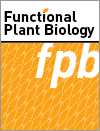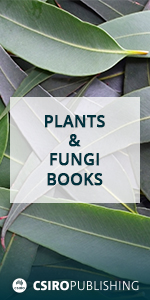Variable adaptability to complete submergence was observed among Lotus and Trifolium species, while Melilotus albus and Trifolium michelianum did not survive. Lotus species demonstrated superior recovery growth from submergence compared to Trifolium species, particularly Lotus tenuis, making it suitable for flood-prone areas. The better performance of Lotus species after submergence was due to their ability to maintain higher stomatal conductance, increased chlorophyll concentration in young leaves, and quicker recovery of PSII efficiency.

Functional Plant Biology
Volume 51 Number 12 2024
Remote sensing of action of stressors on plants is an important step of their protection. We showed that action of salinization stimulated spatial heterogeneity in the photochemical reflectance index, which was calculated on basis of the leaf reflectance at 530 and 575 nm, and in reflectance at 530 nm in pea (Pisum sativum) leaves. It means that measurements of the spatial heterogeneity of these parameters can be used as indicator of the action of salinization in the plant remote sensing.
Our study unravels that unilateral high intensity blue light (HBL) triggered backlit lodging of etiolated cotton (Gossypium hirsutum) hypocotyls. Unilateral HBL stimulates the change of turgor pressure of hypocotyl lit-side guard cells in cotton seedlings to absorb water from backlit side cells, which resulted in the backlit side cells shrinking and backlit lodging. Abscisic acid signaling can inhibit both HBL-induced stomatal opening and backlit lodging, indicated that the backlit lodging phenomenon attributed to HBL-induced stomatal opening.
Extreme temperatures, as a result of global warming, cause significant reduction in agricultural yields. We introduced a chaperone from Artemia urmiana that helps other proteins to function properly in extreme environments into Arabidopsis thaliana. Our results indicated that the transgneic Arabidopsis plants were more tolerant to heat stress than the wild-type.
Plants often experience variations in light intensity, referred to as light stress, which affects their plant growth and development and, thus, diminishes their productivity and yield. We conclude that application of plant hormone, brassinosteroid, regulates a complex mechanism to improve light stress tolerance in one month old tomato plants.
Previous research from our lab showed that hypergravity, simulated with centrifuges, enhances wheat seedling vigor and root phenotype. Present study revealed that hypergravity (10g for 12 h) significantly boosts wheat’s resilience to induced drought and salt stress. The benefits, seen in increased growth and abiotic stress tolerance, were consistent across different wheat varieties. The study further links these improvements to changes in plant hormones and stress-related genes, providing new evidence that hypergravity can effectively enhance stress resilience in wheat.
Rising atmospheric drying is causing losses in crop productivity worldwide, by triggering excessive plant water losses. Water-saving varieties are effective in limiting yield losses under atmospheric drying, but the genetic regions controlling this behavior are unknown. We screened hundreds of soybean (Glycine max) plants for their water losses in response to atmospheric drying and identified genetic regions controlling their responses. These findings open the way to breed for climate-smart, water-saving legumes that are better-yielding under current and future drought conditions.





